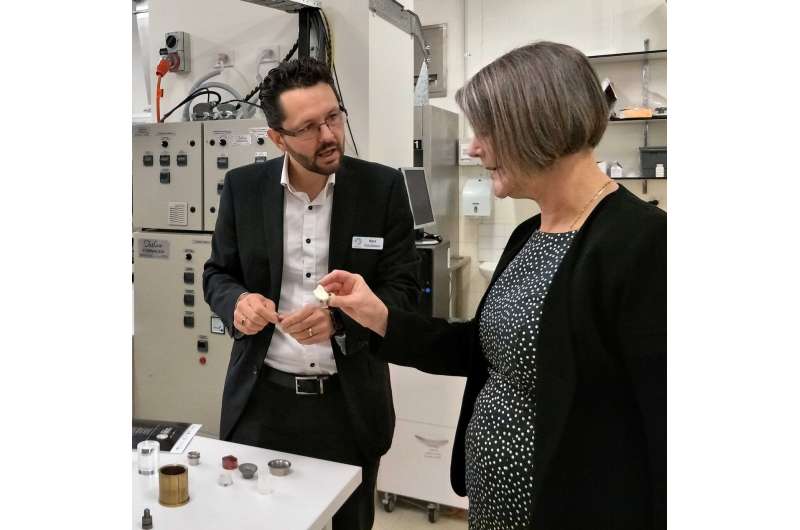Disappearing trick: New strategies to treat chronic pain

Pain is a normal part of life, but persistent pain is oppressive to endure. "It is easier to find men who will volunteer to die," said Roman emperor Julius Caesar, "than to find those who are willing to endure pain with patience."
Yet, many people live with persistent pain, defined as physical suffering that lasts three months or longer. It can be mild, moderate or severe, and it can occur intermittently or constantly. It is Australia's third most costly health condition, with back pain and arthritis—the two most common forms of chronic pain—accounting for 40 percent of forced retirements.
Prof Mark Hutchinson, Director of the Centre for Nanoscale BioPhotonics (CNBP), is familiar with pain. "I did my lower back in after falling off my bike during my Ph.D., and it took me three years to recover. I would be barely able to get through a whole day."
Hutchinson is now a pioneer in pain research, his work having identified innate immune receptors in the brain that play a role in the action of drugs like opioids. And he heads a center where biologists, clinicians, chemists, engineers and physicists across eight universities, four institutes and three companies are making surprising advances in ways to detect, visualize and understand a host of ailments—as well as applying them to non-medical uses, such as agriculture. But pain remains his primary research focus at the center, a field in which he serves as chief investigator.
And pain isn't just about discomfort: studies show that persistent pain has profound impacts on the body's endocrine, cardiovascular, immune, neurological and muscular-skeletal systems. To date, most research has focused on stopping pain. But a growing number of scientists, Hutchinson included, believe that only by understanding pain in all its complexity will we be able to control it.
"We will never be able to cure pain," said Hutchinson. "But we may be able to push it far back down the consciousness register, so that the persistence of pain just simply doesn't exist anymore."
It's now clear that persistent pain isn't just a localized effect, nor something that manifests entirely in the brain in response to injury. Like pain from a discrete muscular injury, persistent pain has an initial physiological component. But this morphs over time and, coupled with the sufferer's psychological response to pain, can work to lock in the pain.
Once that happens, there's a complex interchange between the central nervous system and the immune system, with the cells and signaling molecules of the immune system influencing brain functions such as pain perception, or nociception. There's also a plethora of two-way communication between the immune system and the brain which scientists are only now beginning to understand.
"People give up work, lose relationships, are put on terrible medicines that change how they perceive the world, or make them depressed," he said. "These are massive life consequences."
But there's hope—not just in understanding how the pain manifests, but in new strategies to treat it. Since first discovering a biological marker of pain tolerance, Hutchinson's research has revolutionized how new medicines for pain are tested: rather than testing 1,500 random people, researchers can now recruit discreet groups of patients with a certain genetic pain profile, or phenotype, and study how they respond to a specific drug targeting a distinct pain type. As well as decide what drugs will best work and when.
"There's a pattern in the molecular underpinning of pain which now allows us to determine who should go onto what drug at what time," he said. "Today you might respond to drug X, but in two weeks, you actually need drug Y because your pain pathology's changing due to a cell type, anatomy or molecular mechanism. This is now giving us far greater precision to the treatment and management of pain."
The other important focus for CNBP will be gender: "We have only scraped the surface in understanding female pain, given that researchers have almost exclusively explored male pain to date," Hutchinson said. "But we're discovering that women experience specific types of persistent pain at up to 8-12 times the rates of males, and at more regular intervals, such as period and pelvic pain. It's becoming clear that the future of pain treatment for females will likely rely on a very different toolbox than that we use for men."
More information: Mark R Hutchinson et al. In vitro opioid induced proliferation of peripheral blood immune cells correlates with in vivo cold pressor pain tolerance in humans: a biological marker of pain tolerance, Pain (2004). DOI: 10.1016/j.pain.2004.05.017
















